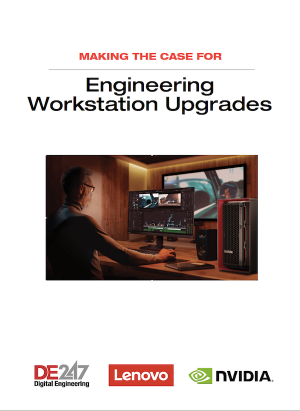Lenovo Powers Up ThinkStation Line
ThinkStation PX, P7 and P5 workstations feature high-end chips from Intel, NVIDIA Ada GPUs and a revamped chassis designed by Aston Martin.

Lenovo ThinkStation PX includes support for more cores and expandability than previous generations of Lenovo workstations. Image courtesy of Lenovo.
Latest News
March 10, 2023
Lenovo has launched new professional workstations, the ThinkStation PX, P7 and P5, featuring the latest processor technology from Intel® (ranging up to 120 cores) and support for high-end NVIDIA RTX professional GPUs. The new workstations also have a redesigned chassis thanks to a partnership with Aston Martin.
“These new desktop workstations have been meticulously designed with a customer-centric lens in order to meet desired business outcomes and deliver innovative new solutions that our customers can enjoy well into the future as workloads increase in complexity,” said Rob Herman, vice president of Lenovo’s Workstation and Client AI Business Unit. “We partnered closely with Intel, NVIDIA and Aston Martin to ensure these new systems offer the best of form and functionality by combining a premium chassis with ultra high-end graphics, memory and processing power.”
Aston Martin, a Lenovo customer, worked with the computer manufacturer to create a new tool-less chassis design for improved flexibility and ergonomics. According to the company, the chassis’ 3D grill is directly inspired by Aston Martin’s DBS grand tourer. Redesigned air baffles and larger 3D hex ventilation openings, along with Lenovo’s patented tri-channel cooling system, allow for unobstructed airflow to maximize the performance of CPUs, GPUs, memory, and storage. Additionally, all three of the new workstations have a modular design with front access drives for easy serviceability and upgrade flexibility.
“The design collaboration of Lenovo’s new ThinkStation chassis has been an amazing three-year journey,” said Cathal Loughnane, director of Aston Martin Partnerships. “As Lenovo workstation customers ourselves this project was a unique opportunity to craft a high-performance system that we will use to design and develop our high-performance vehicles.”

Lenovo ThinkStation PX
The Lenovo ThinkStation PX includes support for more cores and expandability than previous generations of Lenovo workstations. Rack-optimized, the ThinkStation PX can be used for both desktop and data center applications. The workstation is powered by the latest 4th Gen Intel Xeon Scalable processors, which offer up to 120 CPU cores and a 53% average performance gain over the prior generation, according to the company. The ThinkStation PX also offers support for up to four dual-slot NVIDIA RTX 6000 Ada Generation GPUs, so users can manage and execute complex workflows including creative finishing and CAE simulation. The workstation comes with up to 2TB of DDR5 memory and ultra-fast bandwidth through PCIe Gen 5 lanes.
Lenovo ThinkStation P7
The ThinkStation P7 features a new compute architecture with Intel Xeon W processors, supporting up to 56 cores in a single socket. The ThinkStation P7 is also rack-optimized for use in a variety of desktop and data center environments in a 4U enclosure. With support for up to three dual-slot NVIDIA RTX 6000 Ada Generation GPUs, the unit is targeted at content creators, architects, designers, engineers and data scientists.
Lenovo ThinkStation P5
The ThinkStation P5 is engineered for a wide number of industry verticals and has been redesigned to satisfy users’ demand for higher levels of performance, IT expandability and ease of management in the enterprise, the company says. The workstation features a newly designed chassis, the latest Intel Xeon W processors, which offer up to 24 cores, and support for up to two NVIDIA RTX A6000 professional graphics cards. It is tailored for solid modeling and compute-intensive tasks including BIM, complex 3D CAD, reality capture and geospatial visualization, visual effects, and edge deployments.
“NVIDIA offers the world’s most powerful visual computing GPUs for desktop workstations,” said Bob Pette, vice president of Professional Visualization at NVIDIA. “These are featured in all three of Lenovo’s new ThinkStation desktop systems, equipping data scientists, engineers and creative professionals with the high-performance technology they need to work with massive datasets, innovate faster, and elevate their AI and compute-intensive workflows of tomorrow.”
The three new workstations will be available starting in May 20233.
Sources: Press materials received from the company and additional information gleaned from the company’s website.
More Lenovo Coverage

Subscribe to our FREE magazine, FREE email newsletters or both!
Latest News
Related Topics







